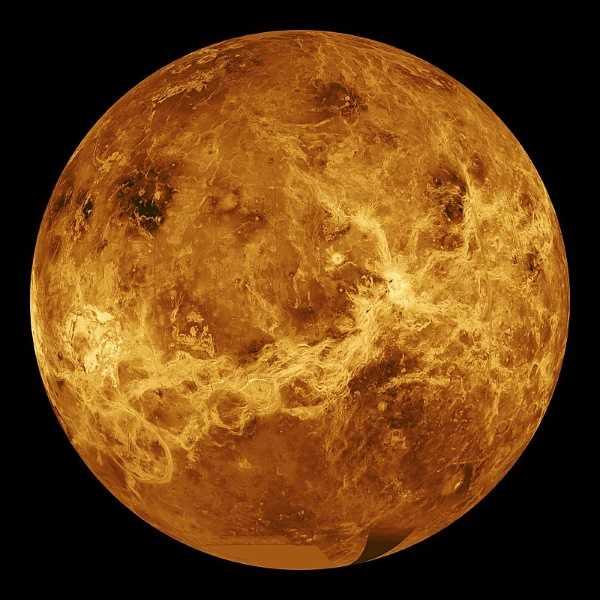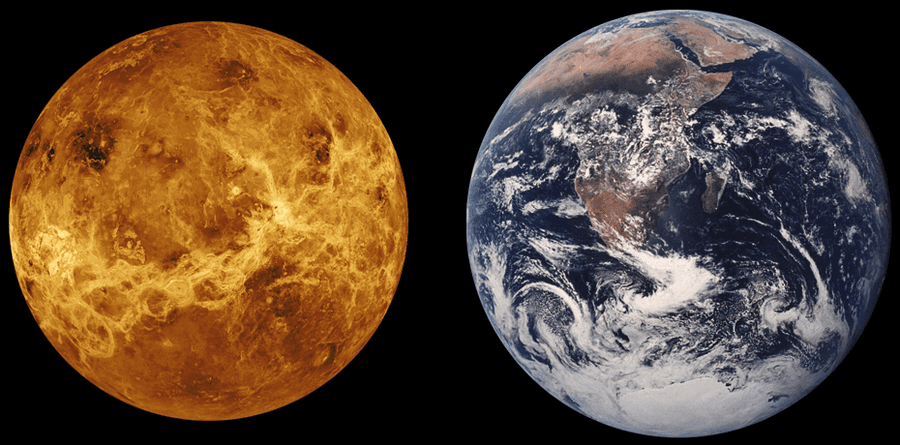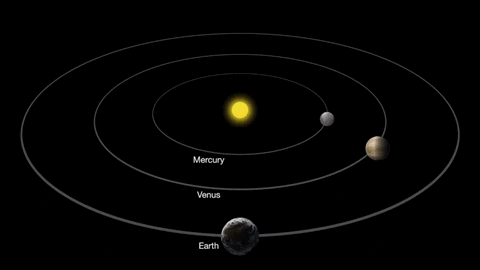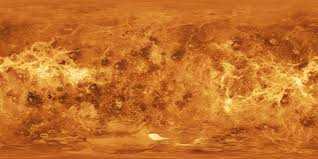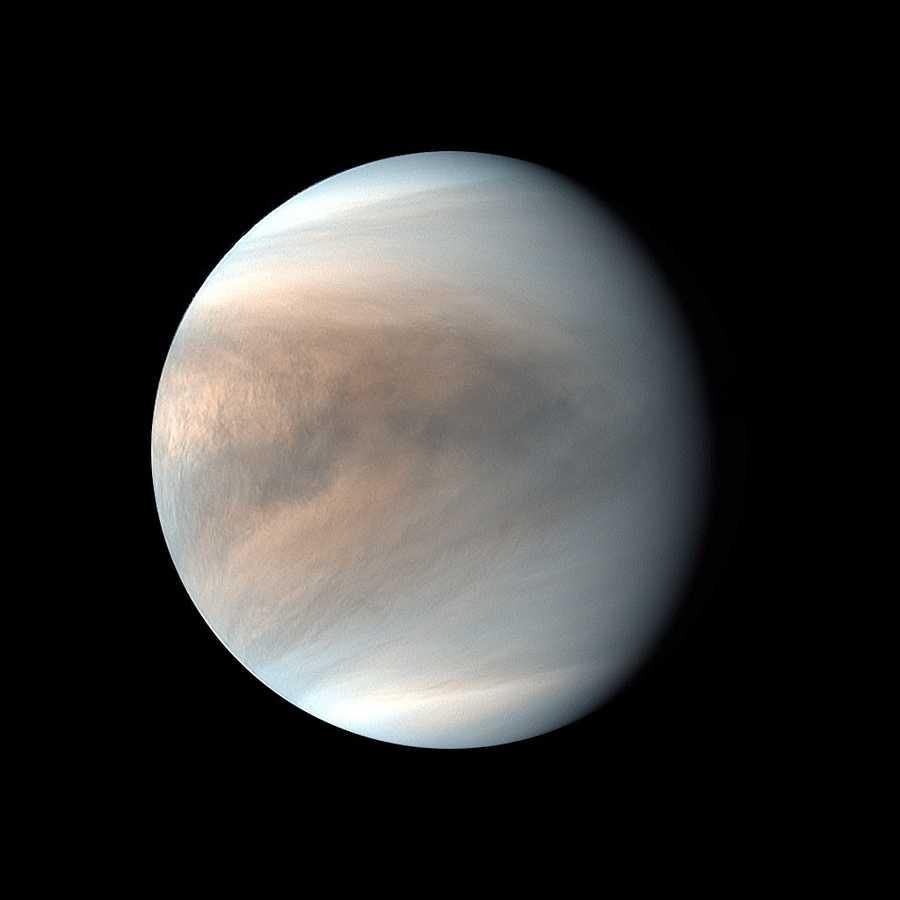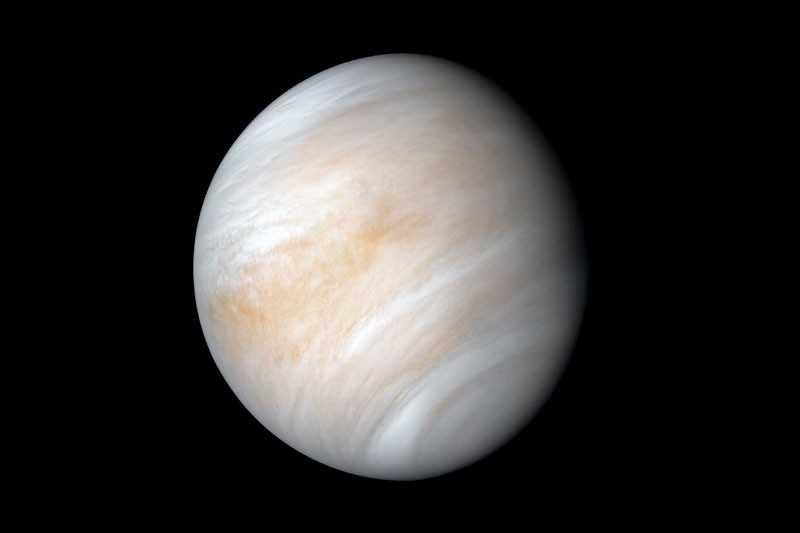Explore the World's Best Ideas
Join today and uncover 100+ curated journeys from 50+ topics. Unlock access to our mobile app with extensive features.
Venus
Venus is the second planet from the Sun and our closest planetary neighbor.
Similar in structure and size to Earth, Venus spins slowly in the opposite direction from most planets.
Its thick atmosphere traps heat in a runaway greenhouse effect, making it the hottest planet in our solar system with surface temperatures hot enough to melt lead. Glimpses below the clouds reveal volcanoes and deformed mountains.
Venus is named for the ancient Roman goddess of love and beauty, who was known as Aphrodite to the Ancient Greeks.
18
163 reads
Quick facts
Day: 243 Earth days
Year: 225 Earth days
Radius: 3,760 miles | 6,052 kilometers
Planet type: Terrestrial
Temperature: 880 degrees Fahrenheit / 471 degrees Celsius
Moons: No moons
16
54 reads
Size and distance
With a radius of 3,760 miles (6,052 kilometers), Venus is roughly the same size as Earth — just slightly smaller.
From an average distance of 67 million miles (108 million kilometers), Venus is 0.7 astronomical units away from the Sun. One astronomical unit (abbreviated as AU), is the distance from the Sun to Earth.
It takes sunlight 6 minutes to travel from the Sun to Venus.
15
42 reads
Orbit and rotation
Venus rotation and orbit are unusual in several ways, Venus is one of just two planets that rotate from east to west.
Only Venus and Uranus have this "backwards" rotation. It completes one rotation in 243 Earth days — the longest day of any planet in our solar system, even longer than a whole year on Venus.
But the Sun doesn't rise and set each "day" on Venus like it does on most other planets. On Venus, one day-night cycle takes 117 Earth days because Venus rotates in the direction opposite of its orbital revolution around the Sun.
15
46 reads
Structure
Venus is in many ways similar to earth in its structure.
It has an iron core that is approximately 2,000 miles (3,200 kilometers) in radius. Above that is a mantle made of hot rock slowly churning due to the planet's interior heat.
The surface is a thin crust of rock that bulges and moves as Venus' mantle shifts and creates volcanoes.
14
30 reads
Formation
When the solar system settled into its current layout about 4.5 billion years ago, Venus formed when gravity pulled swirling gas and dust together to form the second planet from the Sun.
Like its fellow terrestrial planets, Venus has a central core, a rocky mantle and a solid crust.
14
34 reads
Surface
Froms space, Venus is bright white because it is covered with clouds that reflect and scatter sunlight. At the surface, the rocks are different shades of grey, like rocks on Earth, but the thick atmosphere filters the sunlight so that everything would look orange if you were standing on Venus.
Venus has mountains, valleys, and tens of thousands of volcanoes. The highest mountain on Venus, Maxwell Montes, is 20,000 feet high (8.8 kilometers), similar to the highest mountain on Earth, Mount Everest. The landscape is dusty, and surface temperatures reach a scalding 880 degrees Fahrenheit (470 degrees Celsius).
Venus is covered in craters, but none are smaller than 0.9 to 1.2 miles (1.5 to 2 kilometers) across. Small meteoroids burn up in the dense atmosphere, so only large meteoroids reach the surface and create impact craters.
15
23 reads
Atmosphere
Venus atmosphere consists mainly of carbon dioxide, with clouds of sulfuric acid droplets
The thick atmosphere traps the Sun's heat, resulting in surface temperatures higher than 880 degrees Fahrenheit (470 degrees Celsius). The atmosphere has many layers with different temperatures. At the level where the clouds are, about 30 miles up from the surface (48.2 kilometers), it's about the same temperature as on the surface of the Earth.
As Venus moves forward in its solar orbit while slowly rotating backwards on its axis, the top level of clouds zips around the planet every four Earth days, driven by hurricane-force winds traveling at about 224 miles (360 kilometers) per hour. Atmospheric lightning bursts light up these quick-moving clouds. Speeds within the clouds decrease with cloud height, and at the surface are estimated to be just a few miles per hour.
On the ground, it would look like a very hazy, overcast day on Earth. And the atmosphere is so heavy it would feel like you were 1 mile (1.6 kilometers) deep underwater.
14
14 reads
Magnetosphere
Even tho venus is similar in size to the Earth and has a similarly-sized iron core, Venus' magnetic field is much weaker than the Earth's due to Venus' slow rotation.
14
28 reads
Potential for life
No human has ever visited venus, but the spacecrafts taht have been sent to the surface of Venus do not last very long there. Venus' high surface temperatures overheat electronics in spacecraft in a short time, so it seems unlikely that a person could survive for long on the Venusian surface.
There is speculation about life existing in Venus' distant past, as well as questions about the possibility of life in the top cloud layers of Venus' atmosphere, where the temperatures are less extreme.
13
28 reads
IDEAS CURATED BY
I'm passionate about helping people live their best lives. I'm a lifestyle coach & burnout coach.
Rogier. H's ideas are part of this journey:
Learn more about leadershipandmanagement with this collection
Basic survival skills
How to prioritize needs in survival situations
How to adapt to extreme situations
Related collections
Similar ideas
6 ideas
Venus
solarsystem.nasa.gov
13 ideas
In Depth | Jupiter – NASA Solar System Exploration
solarsystem.nasa.gov
1 idea
Read & Learn
20x Faster
without
deepstash
with
deepstash
with
deepstash
Personalized microlearning
—
100+ Learning Journeys
—
Access to 200,000+ ideas
—
Access to the mobile app
—
Unlimited idea saving
—
—
Unlimited history
—
—
Unlimited listening to ideas
—
—
Downloading & offline access
—
—
Supercharge your mind with one idea per day
Enter your email and spend 1 minute every day to learn something new.
I agree to receive email updates

